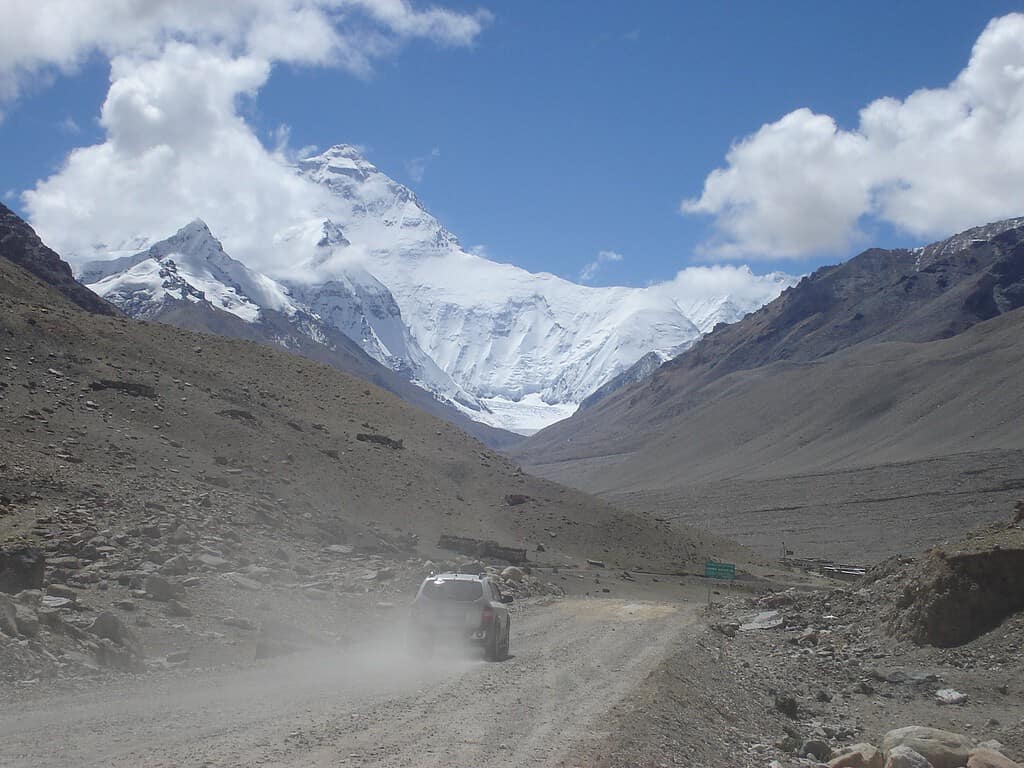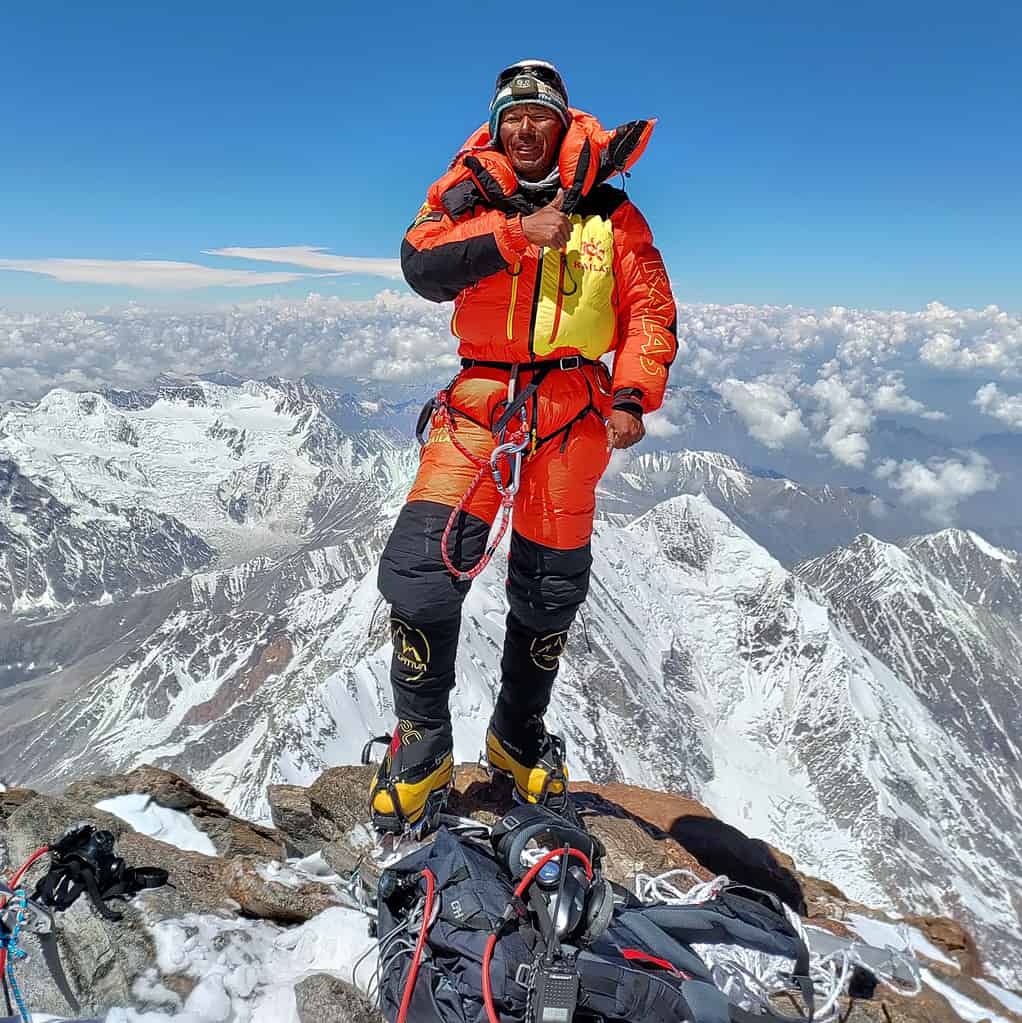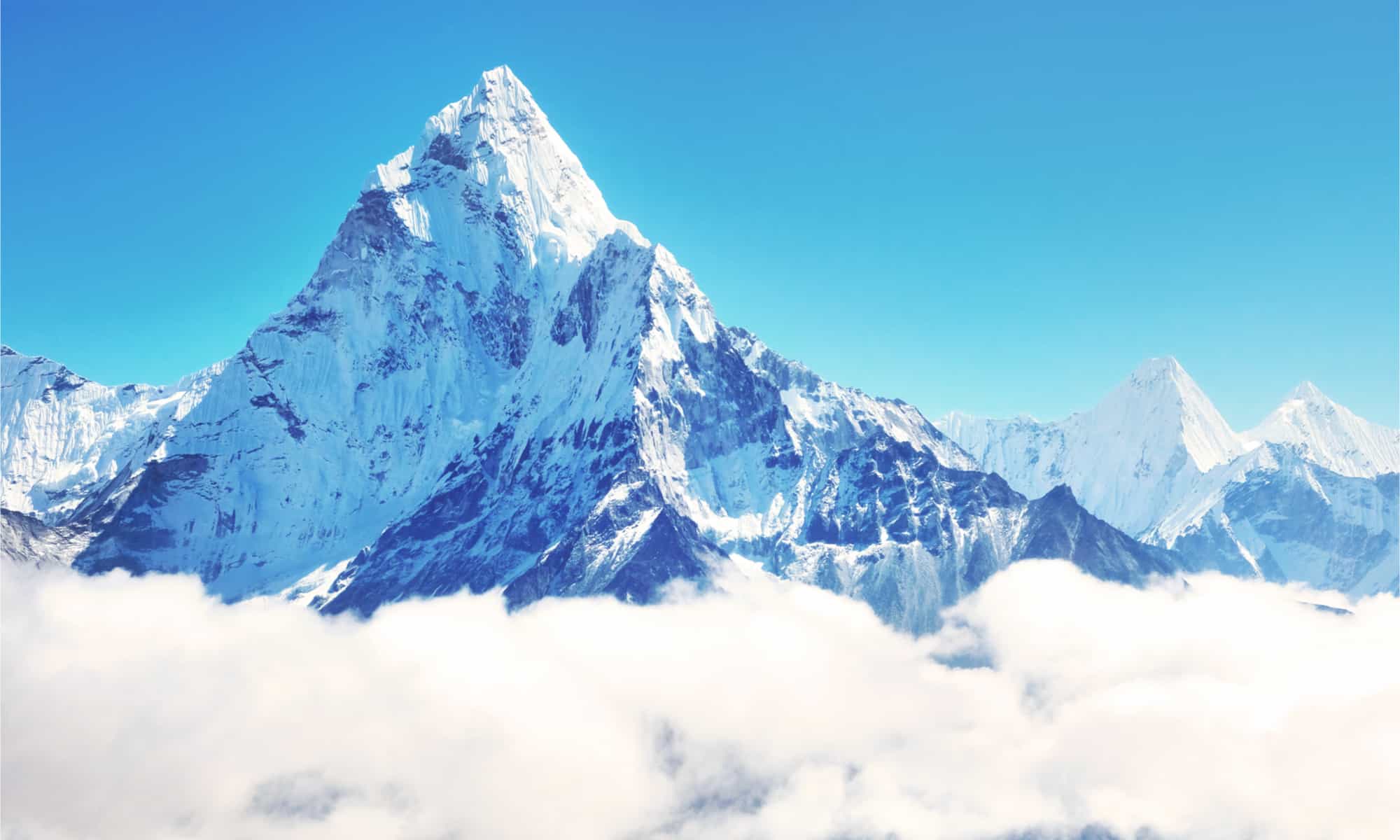The crowning glory for die-hard mountaineers continues to be reaching the summit of the world’s highest mountain, Mount Everest. Standing over five miles high, this peak in the Himalayas is fraught with dangers for even the most experienced climbers. Still, around 800 people every year attempt to ascend Everest. Not everyone succeeds, but for those who do, just how long does it take to climb Mount Everest?
Measuring ‘Chomolungma’
The true height of Everest, or Chomolungma, the Tibetan name for the mountain, has been questioned for decades.
Of course, measuring a mountain this high, whose peak is covered in ice isn’t easy! Along with those difficulties, seismic activity can change the height of Mount Everest, both more and less.

Roughly 800 people every year attempt to climb Mount Everest.
After an earthquake in 2015, the quest to get an “accurate” number started a considerable data collection effort by both Nepal and China (the two countries in which Mount Everest is located). After an intensive, multi-year, high-tech approach, it was announced in December 2020 that the officially recognized height of the mountain is 29,031.69 feet or 8,848.86 meters.
Although obtaining this precise number was of great importance to both Nepal and China, it was not tremendously different than earlier numbers. In 2005 China used ice-penetrating radar and GPS measurements to come up with a “rock height” of 29,017.12 (8,844.43 meters). Back in 1954, a survey had concluded that Everest was 29,028 feet (8,848 meters).
The Risks of the Ascent
One would think that risking embolisms, pulmonary edema, altitude sickness, and frostbite would limit the number of those who attempt such a climb. But there’s also the cost.
There are permits to be purchased, which are $15,000 each, as well as expenditures such as travel and equipment. Just a high-quality sleeping bag suitable for temperatures as low as -20 degrees Fahrenheit can go for a minimum of $800. Then there’s supplemental oxygen at around $600 a cylinder Add to that having to pay a sherpa, a trained guide, who also will carry much of the gear.

A sherpa above the clouds on Mount Everest. It’s easy to see why the summit is called the top of the world.
But none of those factors seem to have gotten in the way of the dream of wanting to stand at the summit of the world’s tallest mountain. That’s reflected in the sheer number of climbers, experienced or otherwise, who attempt the ascent every year and who at times have made the precarious path to the top resemble an amusement park ride.
An example is a 2019 photo of a traffic jam of climbers at the final ascent to the summit that went viral. That was the year 11 died trying to get there. Then there was the “Mount Everest Disaster” of 1996 when a blizzard claimed the lives of eight climbers in a single day. Along with extreme weather, avalanches are also responsible for numerous fatalities on Everest.
This year has proven to be the deadliest climbing season for Everest enthusiasts. So far, 17 died and several more are still missing and presumed dead. According to the head of Nepal’s tourism department, the disastrous tally was the result of extreme cold, and “carelessness” by foreigners.
How Long Does It Take To Make the Climb?
Climbing Mount Everest takes time. Not just for the climb itself but to become acclimated to the low-oxygen environment. Just being at the peak of fitness isn’t enough. Ascending a few thousand feet in a day is considered a “preventative” measure to avoid acute altitude sickness.
Ascending above 26,000 feet (8,000 meters) is commonly known as entering “the death zone.” Before Peter Habeler and Reinhold Messner did it in 1978 without supplemental oxygen, it was thought to be physically impossible to stay alive in such an oxygen-poor environment.
Still, some 97 percent of mountaineers couldn’t make the climb without supplemental oxygen. Carrying oxygen is both weighty and expensive, with a minimum of five canisters required for safety,

The most recent officially recognized height of Everest is 29,031.69 feet or 8,848.86 meters.
©Martin Gillespie/Shutterstock.com
Considering the time spent trekking to base camp and the time acclimating to the thin air, it takes around two months to climb Mount Everest. And that’s if the weather stays good.
The “summit window,” when the weather is most apt to accommodate a climb to the peak, is April and May. Even then, however, ice, snow, and windstorms are not unusual.
Trash at the Top of the World
From the base camps to the peak, Mount Everest has become a dumping ground for litter.
Mountaineer Troy Aupperle calls Everest a “free-for-all” in which there are “no rules, no accountability, no nothing.” In other words, what climbers haul up doesn’t necessarily come down with them.

Mount Everest isn’t alone in being turned into a trash dump by climbers. This photo is of a base camp at the Thajiwas Glacier in India.
©Adam Jones from Kelowna, BC, Canada / CC BY-SA 2.0 – Original / License
Part of the problem isn’t just being careless. As Aupperle tells it, by the time a mountaineer descends, their energy is spent. Anything you don’t have to carry back down with you is dumped along the way, he said.
Grim Reminders
Unfortunately, more than just litter lies along the way to the summit of Everest.
Approximately 200 bodies of climbers who died on Mount Everest remain in the spots where they perished. In some cases, they are visible reminders to others as they make their way up the risky trails that Mount Everest may be climbed, but never conquered.
Thank you for reading! Have some feedback for us? Contact the AZ Animals editorial team.








